
[052] Bombus Species, Bumble Bees
Introduction
There are 250 species in the genus Bombus known as Bumble Bees or Bumble-bees or Bumblebees. About thirty species may be seen in Britain but only about half a dozen are common. I will consider a few species, jointly and separately.
Taxonomy
Kingdom – Animals
Phylum – Arthropods
Class – Insects
Order – Hymenoptera
Suborder – Apocrita (Bees, Wasps and Ants and others)
Superfamily – Apoidea
Clade – Anthophila (Bees)
Family – Apidae
Subfamily – Apinae
Clade – Corbiculata (Bees with pollen baskets)
Tribe – Bombini (Bumble Bees)
Genus – Bombus (Bumble Bees)
Scientific Names – See text
Name
Bumble and the Latin Bombus are both derived as onomatopoeic versions of buzzing or humming. In the archaic form humblebee, humble- means ‘low’ or ‘on the ground,’ as many species nest in underground burrows.
Bumble Bees
Most Bumble Bees are social in the same way as [029] the Honey Bee but with much smaller numbers in their colonies. (About 50 to 2000, compared to hives of about 50 000.) There are some species of Cuckoo Bumble Bees, acting as brood parasites – we have some in Britain but they are not included here.
The largest of our bee species, (Queens are even larger) they are round and hairy, generally with warning coloured bands. Females of the social species have pollen baskets, which distinguishes them from the cuckoo species. They gather nectar and pollen and are important vectors of agricultural pollination.
Queen and workers are both able to sting. They can sting repeatedly as the stinger is not left behind, but they are not usually aggressive. (The male cannot sting.) The 250 species are in fifteen subgenera, one of which is the cuckoo bumble bees.
Reproduction and Castes
Young queens leave the nest in the autumn and mate with male drones driven out of the colony. Drones and workers die and the queen feeds intensively before hibernating. (It’s called diapause but it’s very like hibernation.)
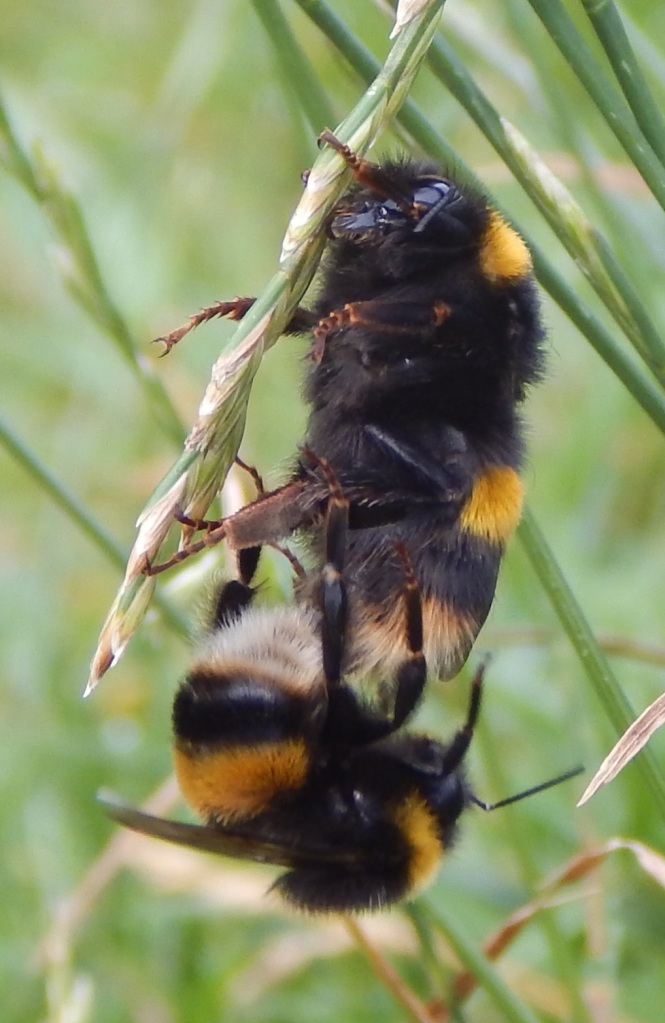
Reproduction is haplodoploid, as for Honey Bees, and the whenever the queen lays an egg, she controls whether to allow fertilization – and hence she controls the sex of the offspring. Larvae are fed both nectar for carbohydrates and pollen for protein. The queen produces workers who continue to look after the nest.
In a young colony the queen minimizes reproductive competition through aggression and pheromones. Almost all of the eggs laid by workers are eaten. As the colony grows larger it eventually produces males and new queens. The queen is usually the mother of the first males but eventually the workers also lay male eggs.
In practice, this means that we see many Queen Bumble Bees and at some times of the year there are only Queens about.
Buff-tailed Bumble Bee
Bombus terrestris, the Buff-tailed Bumble Bee, is common and widespread throughout the UK, and one of the most common Bumble Bees throughout Europe. Terrestris is Latin and means relating to the land or the earth.
It has two obvious orange-brown bands across its body and the tail is white with variable amounts of buff towards the top of this band. The first picture below is a Queen.
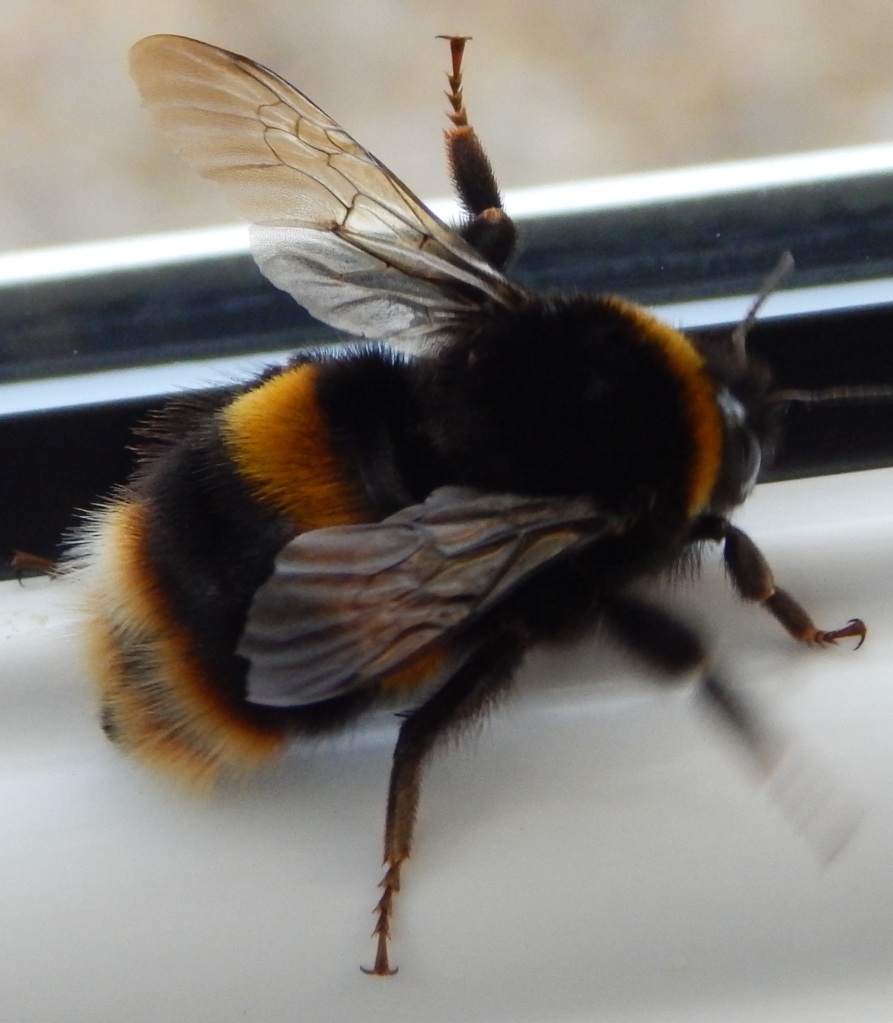

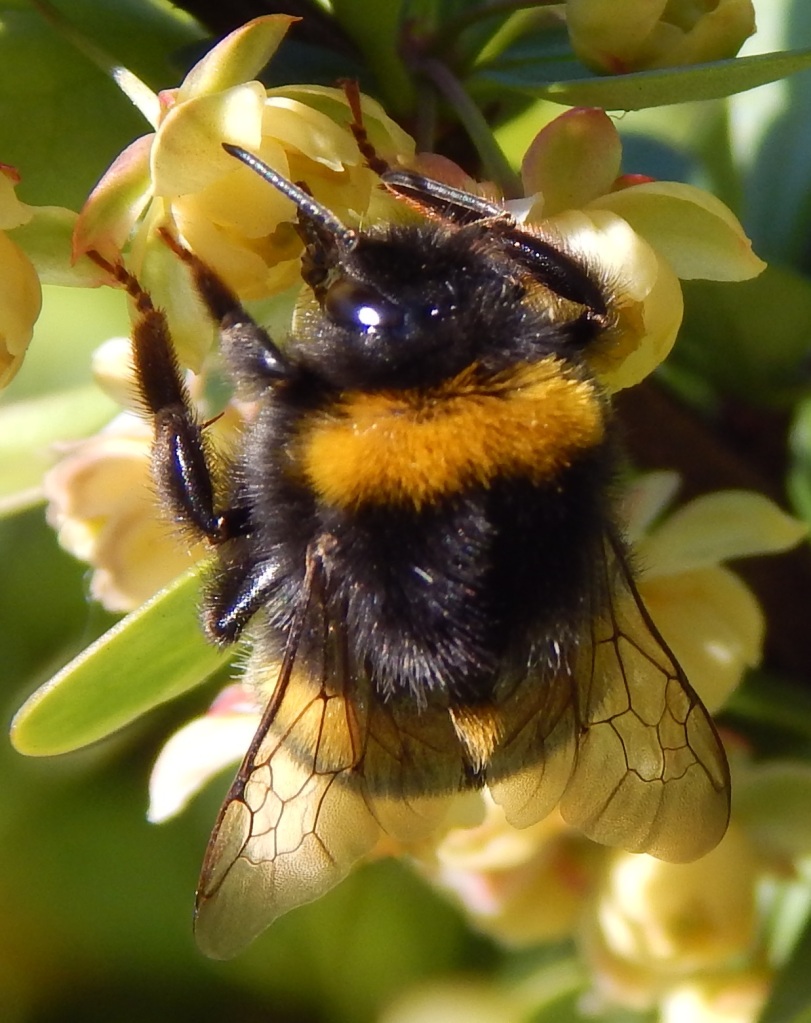
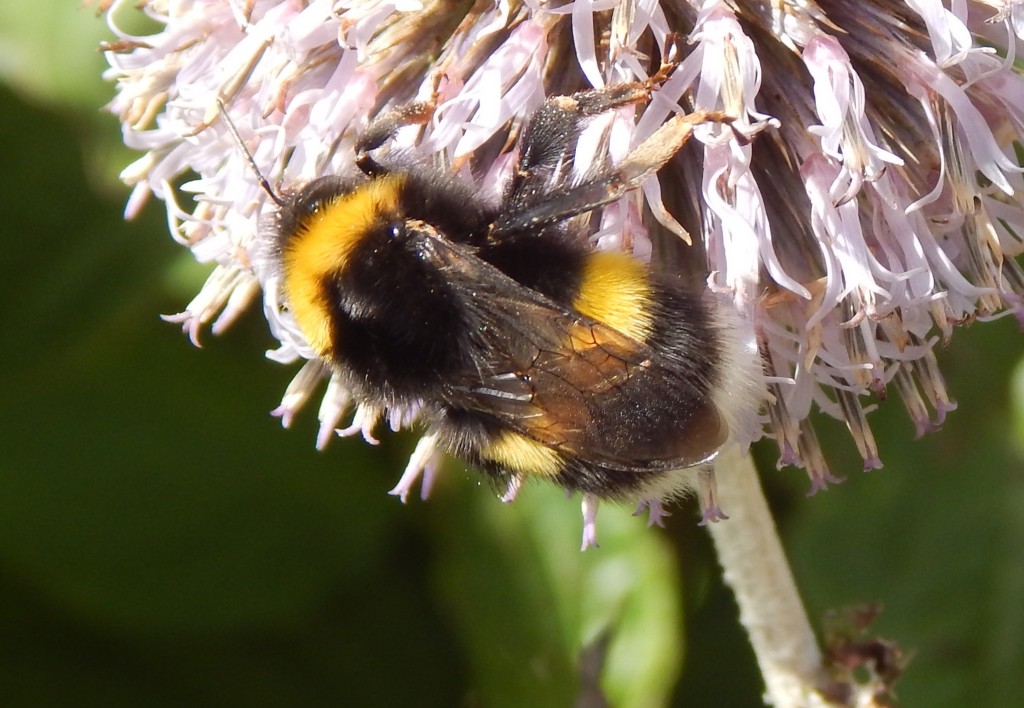
Many Buff-tailed Bumble Bees look like White-tailed Bumble Bees, Bombus lucorum, and the two are difficult to distinguish. Bombus lucorum is now widespread on the island of Ireland but very rare in Britain.

Carder Bee
Bombus pascuorum, the Carder Bee or Common Carder Bee is the most common and widespread British Bumble Bee. Pascuorum means ‘of the pastures.’ It has a distinctive large round hairy area, usually brownish, on its back that gives it its name. (Carding was a process in the productive of wool that involved brushing the fleece with dried [117] Teasel flowers.)
Again, the first picture is a Queen.
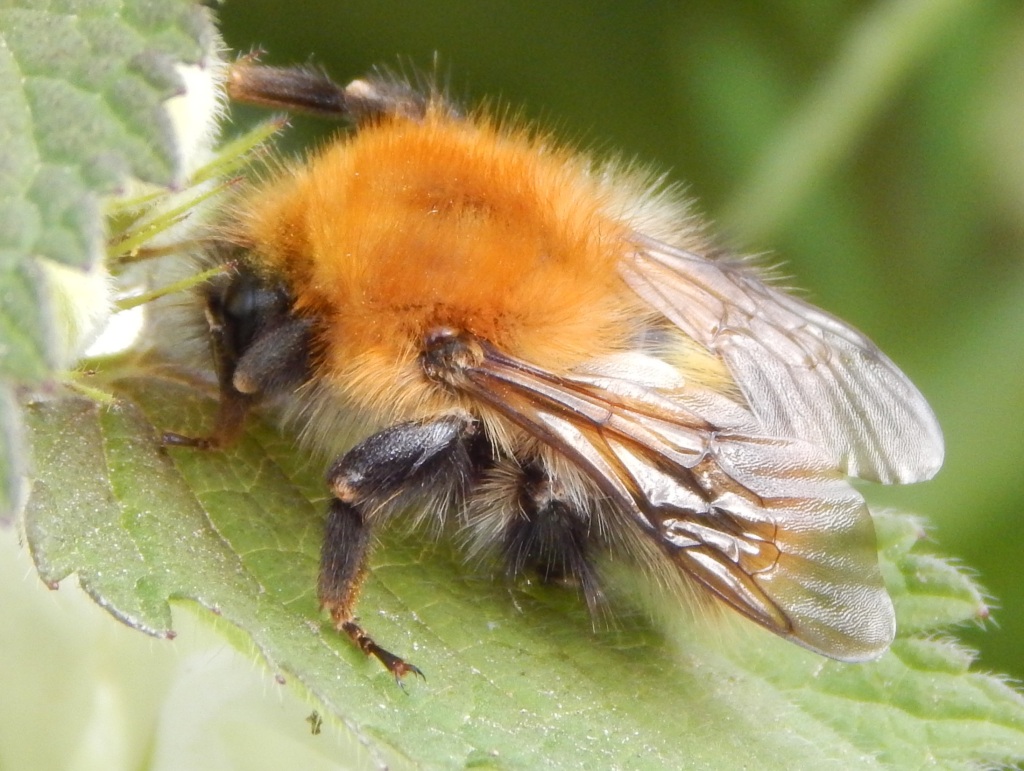
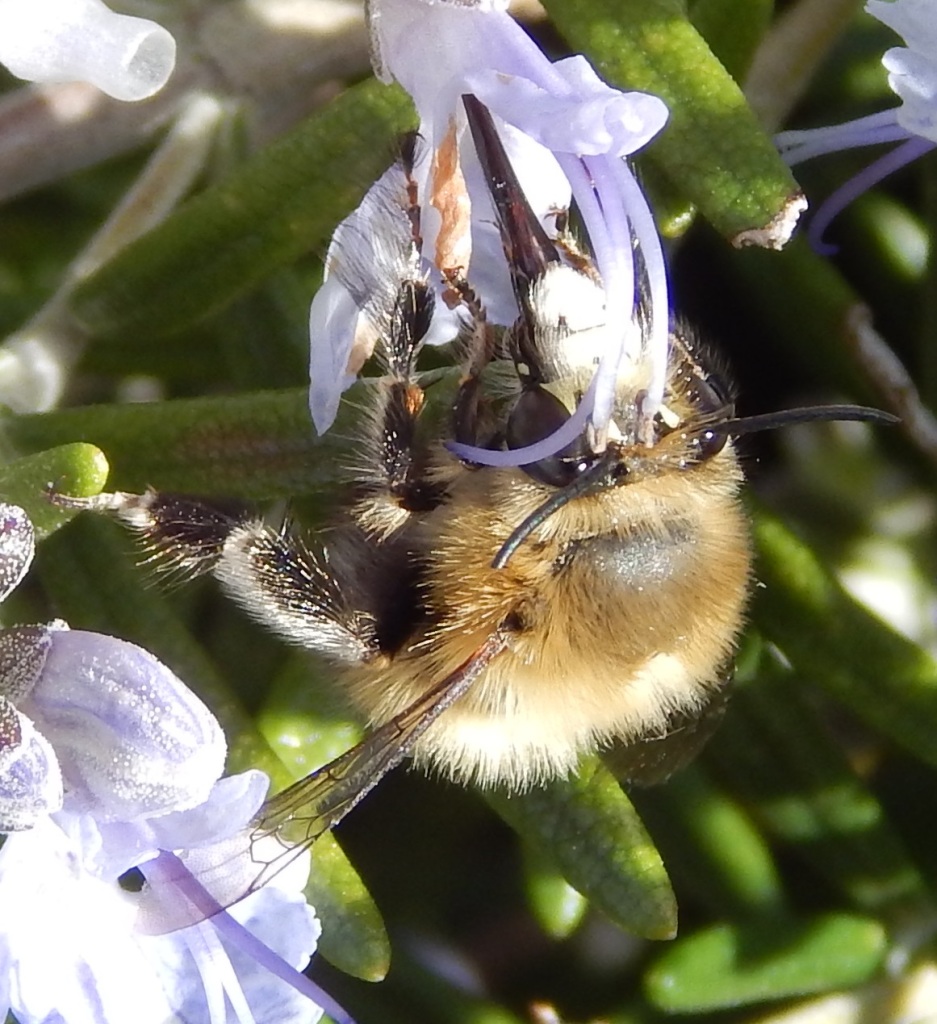
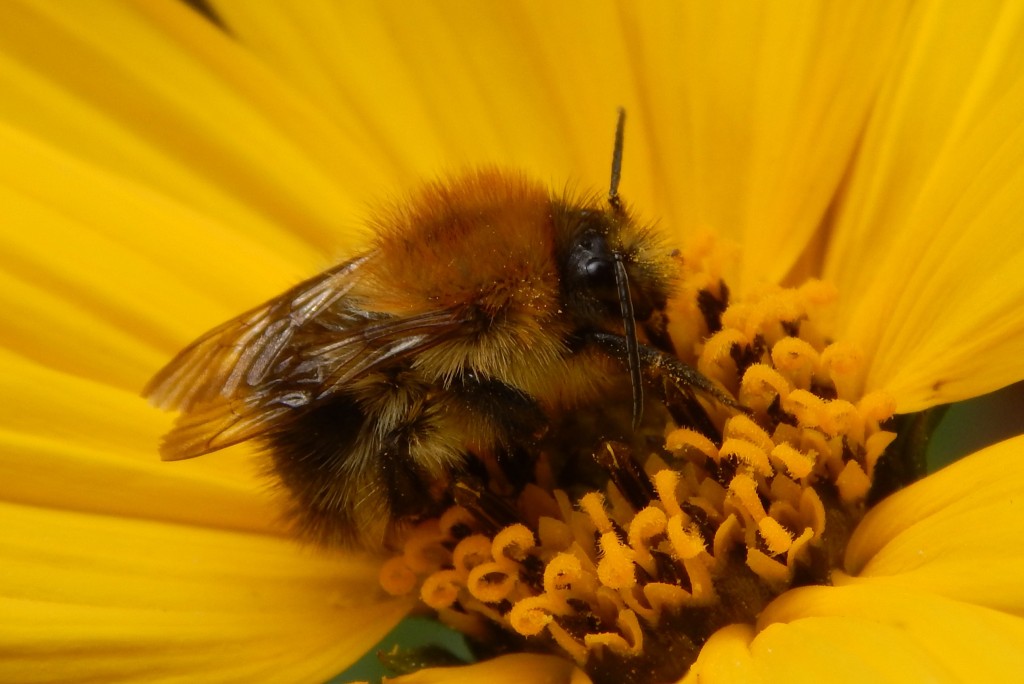
Garden Bumble Bee
Bombus hortorum, the Garden Bumble Bee, is widespread and common over most of the UK. Hortorum is Latin for ‘of the gardens.’ It has three yellow bands and a white tail.
It has a very long tongue used in extracting nectar and sometimes flies with its tongue extended
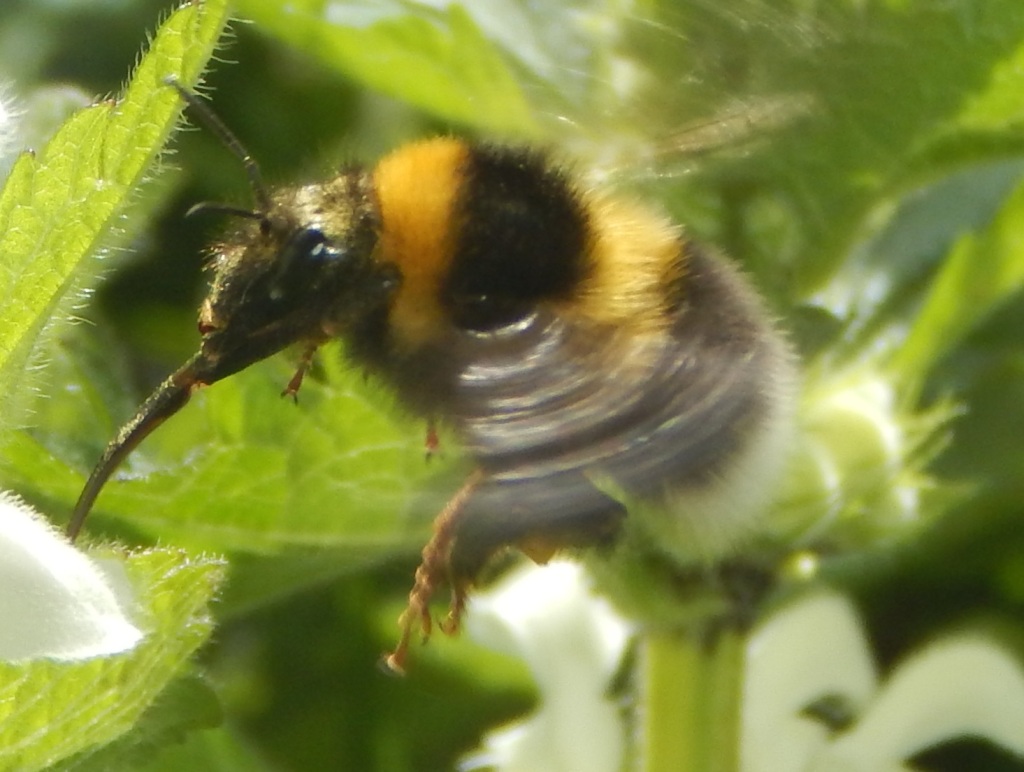
Tree Bumble Bee
Bombus hypnorum, the Tree Bumble Bee, only arrived in Britain in 2001 but is now widespread over all of England and Wales. It has the same hairy back as the Carder Bee but its body is much darker and can be all black.
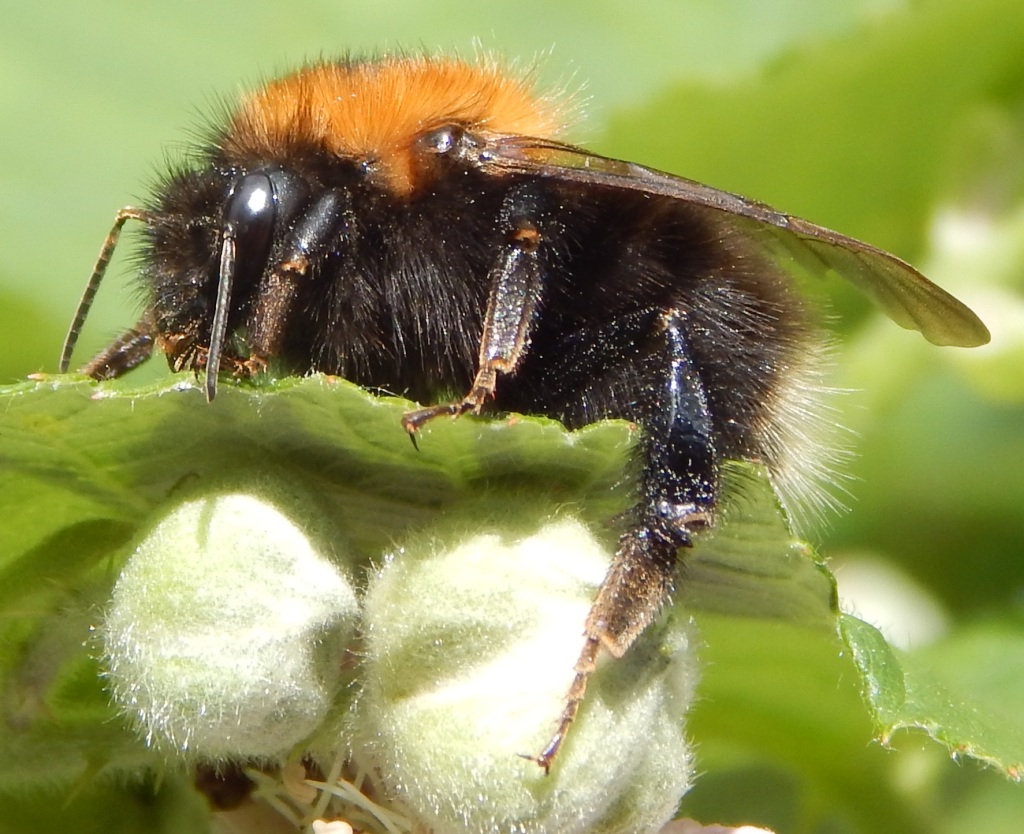
(Another Queen.)
Red Tailed Bumble Bee
Bombus lapidarius, the Red-Tailed Bumble Bee, is relatively widespread but rare in the North of England and Scotland. Its body is almost completely black apart from the distinctive red tail area. Lapidarius is Latin for ‘stony.’
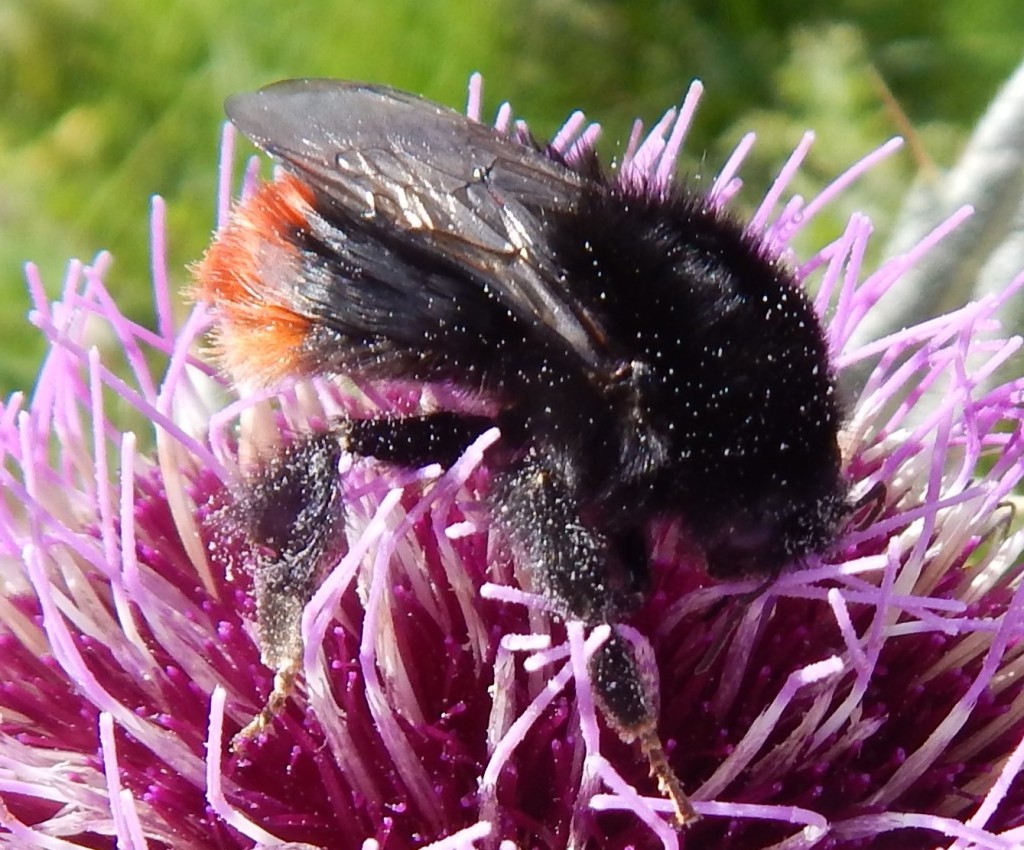

Early Bumble Bee
Bombus pratorum, the Early Bumble Bee is also common and widespread. Pratorum means ‘of the meadows.’ It has a red tail, which is much less marked then Bombus lapidarius. It does emerge earlier than other species.
Others
We have about half a dozen other species with very limited distribution or recently made extinct in Britain
See also
Watch out for [237] Nomad Bees.
